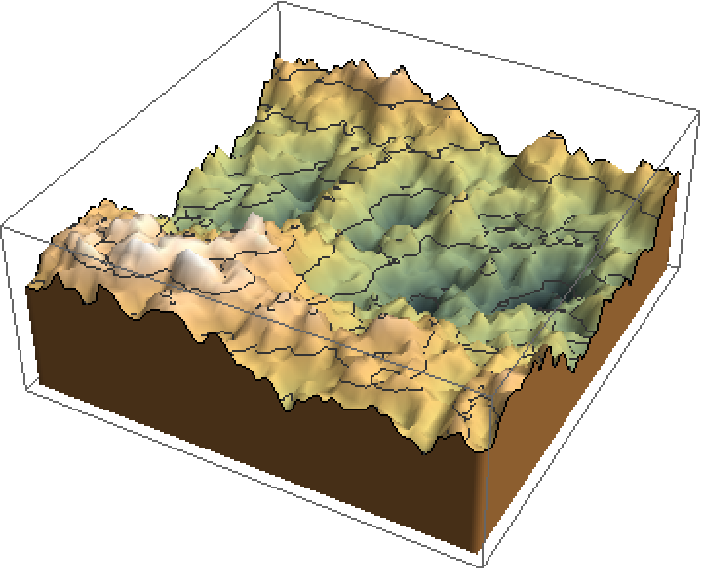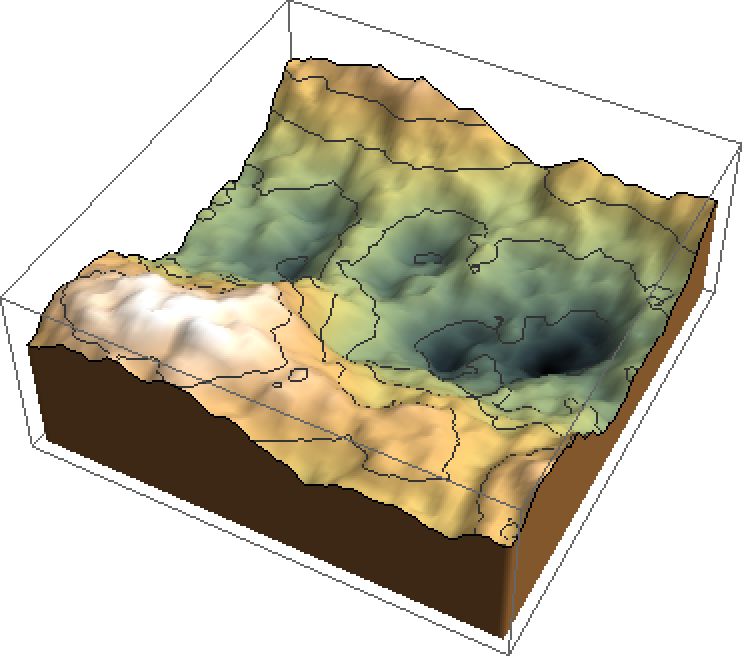Wolfram Function Repository
Instant-use add-on functions for the Wolfram Language
Function Repository Resource:
Generate a fractional Brownian surface
ResourceFunction["FractionalBrownianMotion2D"][n,h] generate a natural surface of sizes n, with Hurst exponent h. |
Generate an ordinary Brownian surface:
| In[1]:= |
| Out[1]= |  |
Generate a smoother Brownian surface:
| In[2]:= |
| Out[2]= |  |
Wolfram Language 11.3 (March 2018) or above
This work is licensed under a Creative Commons Attribution 4.0 International License